GRIPPING TOOLS
Mechanical hands are what carpenters call the many pliers, wrenches, and clamps we use on job sites. When we
can’t tighten a nut by hand, we use a wrench. What we can’t hold with our fingers, we hold with a pair of pliers. When we can’t bring together a glued-up tabletop with our hands, we use a clamp.
Most carpenters carry a wrench or two in their toolbucket. I carry three types: a crescent wrench, an Allen wrench, and a pipe wrench.
I use the crescent wrench the most. The business end has a jaw that can be adjusted to different sizes by rotating a knob near the handle. When using a crescent wrench, make sure it fits snug on the bolt head or nut. A loose-fitting
|
wrench may slip when pressure is applied. To prevent the wrench from rapping your knuckles if it slips, pull it toward you rather than pushing it away.
A б-in. crescent wrench is great for tightening circular-saw blades and doing maintenance work on power tools. A 12-in. wrench should work for most larger jobs.
A crescent wrench can be lubricated with a bit of graphite on the rotating knob. Graphite works better than oil, because oil picks up dirt that can make an adjustable wrench hard to open and close.
An Allen wrench is a hexagonal (six – sided), L-shaped steel rod used to tighten bolts and screws that have the same pattern in their heads (called hex heads). For convenience, buy a wrench
set that comes nestled in its own case. This way they are all in one place and are protected by the case.
Pipe wrenches are large tools with adjustable, serrated jaws and are often used by plumbers. There are different sizes available, but I find that a 14-in. pipe wrench is very versatile. I use it during remodeling jobs in which I have to remove plumbing pipes under a sink. Rather than lubricating the moving parts of a pipe wrench, clean them with paint thinner if they become gummed up and hard to move.
Although a carpenter won’t use them every day, pliers are handy tools to have on the job site. There are many types and sizes out there, and I’d recommend keeping a few of these in your tool-
|
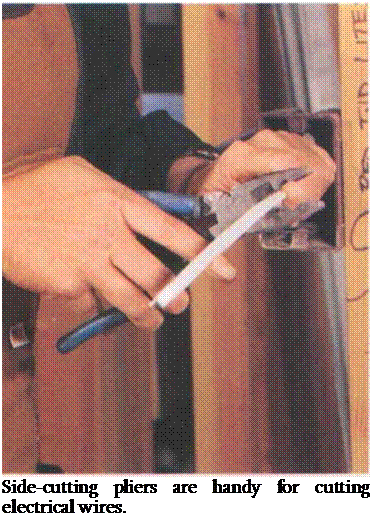
![]()
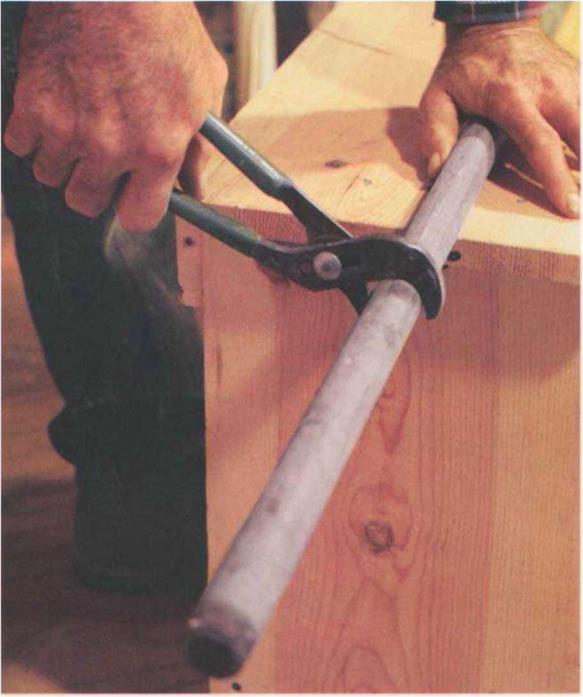
bucket: a standard pair, nippers, sidecutting pliers, channel-lock pliers, and locking pliers.
Standard pliers, called slip-joint pliers, are used to hold things a bit tighter than you could with just your fingers. They can also be used to help turn a screwdriver or to hold a small nail for setting.
Nippers have sharp cutters on the end and are used to cut rope, wire, and nails (see the photo on the facing page). They also work well for pulling nails. I keep nippers in my bucket and frequently use them rather than a hammer or a bar (which can break off the head) to pull difficult nails. To pull a nail with nippers, grab the shaft of the nail with the nippers, rock back and forth on the handles to loosen the nail, and then pull it out.
Side-cutting pliers, also called lineman’s pliers, are useful for holding small items in the jaws, and they are great for cutting and pulling electrical wires (see the left photo above). Just be sure the power is off before working with any electrical wires.
Channel-lock pliers are adjustable and can be used to grip much like a wrench (see the photo above). To adjust a pair, open the jaws and move the groove on
Wide-jaw locking pliers can be used to secure wood to a bench or sawhorse.
A C-clamp can hold wood to a sawhorse while cutting with a circular saw.
one handle into a channel on the other handle. I use mine to hold a variety of things, including flat bars, square nuts, and round pipes.
I first saw locking pliers, more commonly known as Vise Grips, in 1946. Back then it was such a new invention that few people had a pair, but today they are as common as hammers. I never go to a job site without my pair.
Having a pair of locking pliers is like having a small portable vise in your hand.
By turning a knurled knob at the end of the pliers’ handle, the jaws can be opened and closed. When you squeeze the handles, the jaws lock by means of a spring-loaded clamp in the handle, holding the item securely. Flipping a lever on the handle opens the jaws. Special, wide-jaw locking pliers can be used to clamp wood to a bench or sawhorse for cutting (see the left photo above).
Clamps are valuable tools that serve as extra hands to hold whatever you are working on. If you had one of every type of clamp available, you would need a large truck to haul them. Carpenters use several types of clamps that are easily transported: the C-clamp, pipe clamp, bar clamp, and spring clamp.
The venerable C-clamp is the workhorse of the trade, offering straight-on holding power. This tool is a powerful holding device that clamps material steady while sanding, waiting for glue to dry, or sawing (see the right photo above). There are many sizes of C-clamps, ranging
|
|
|
Bar clamps (bottom) and pipe clamps (top) can hold wood securely during glue-up. |
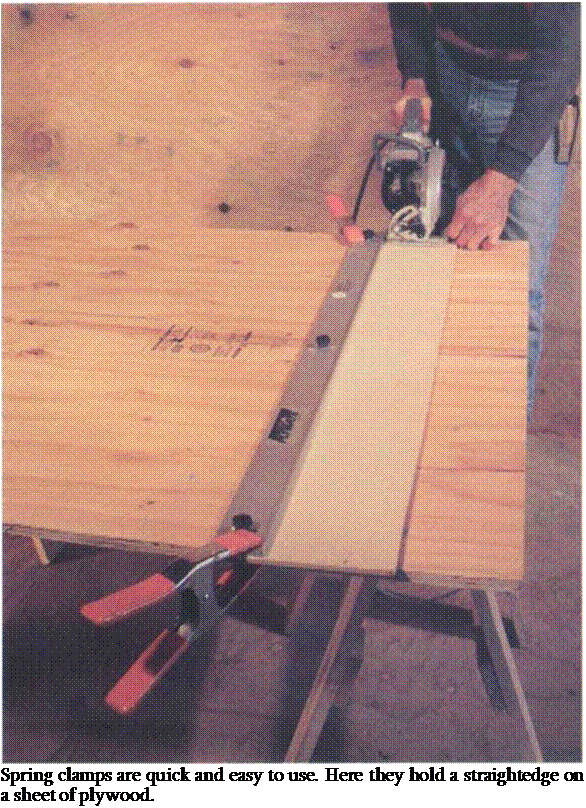
from 1 in. up to more than 1 ft. (the size of a C-clamp is determined by the size of its opening). My б-in. clamps are the ones I use most on the job site.
A pipe clamp is a great job-site clamp because it can be adjusted to hold a wide variety of materials of various sizes. For instance, it can be used to clamp
glued-up boards or be expanded to grip long sections of cabinets. Pipe clamps are available that fit on either 1/нп. or 3/4-in. steel pipe. The advantage of this clamp is that it can be extended to any length of pipe, 20 ft. or more. The stationary part of the clamp is called the foot. The movable part is called the head (see the top photo on p. 25).
A bar clamp works the same way as a pipe clamp, but instead of a round pipe, the head slides on a flat bar (see the bottom photo on p. 25). Bat clamps are available in sizes ranging from 6 in. to more than 6 ft.
A spring clamp works like a large clothespin. It is easy to apply but doesn’t have great holding power. Spring clamps vary in size from small ones that you can open with two fingers to large ones that take both hands to open. They work well for light holding jobs. I find my 6-in. spring clamps perfect for securing a straightedge to a door or sheet of plywood so I can make a straight cut with a circular saw (see the photo at left). They also work well for clamping two small glued pieces of wood or for holding one end of a chalkline. Better models have vinyl-coated tips so they don’t mar finish wood.






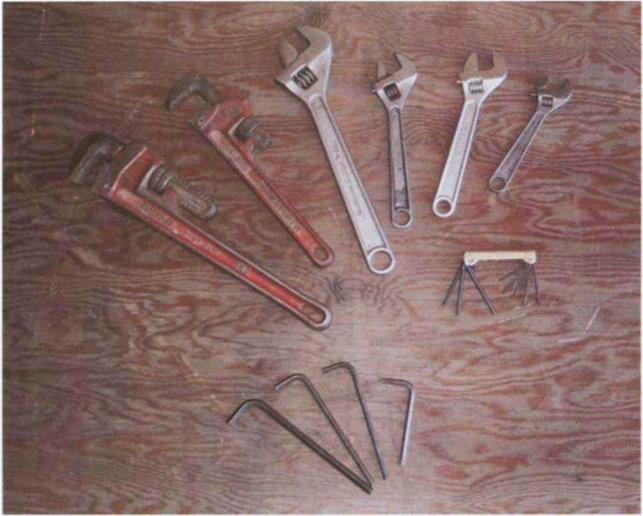
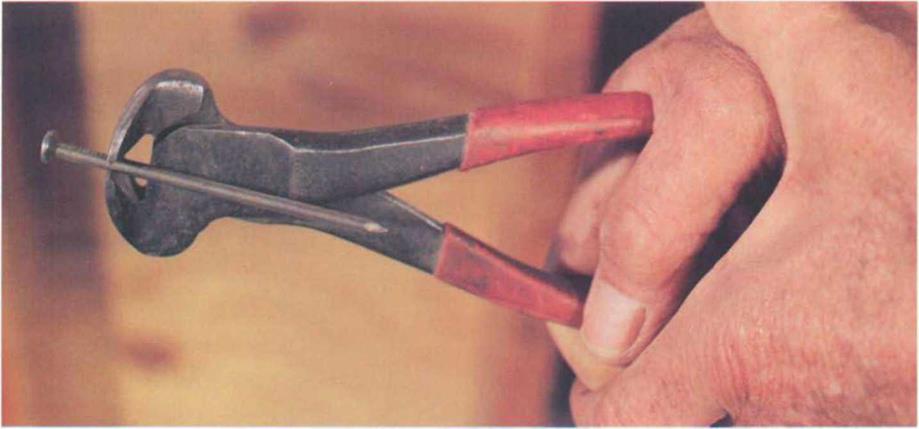
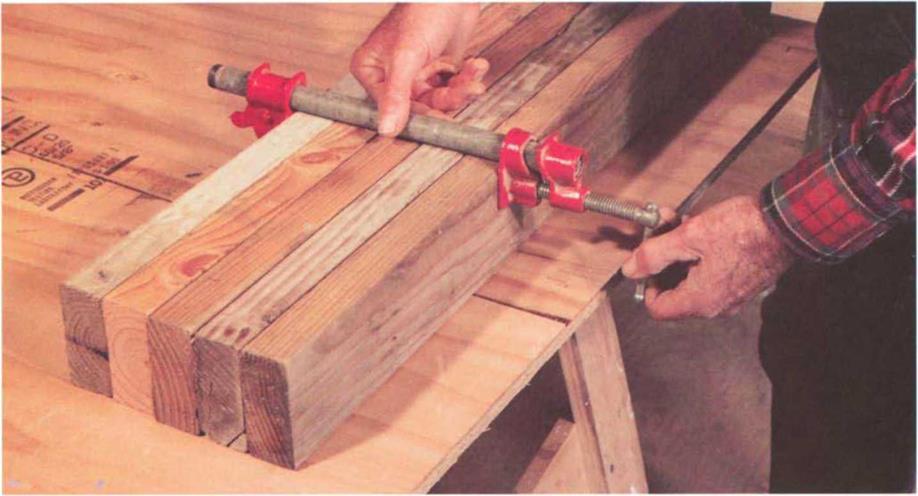
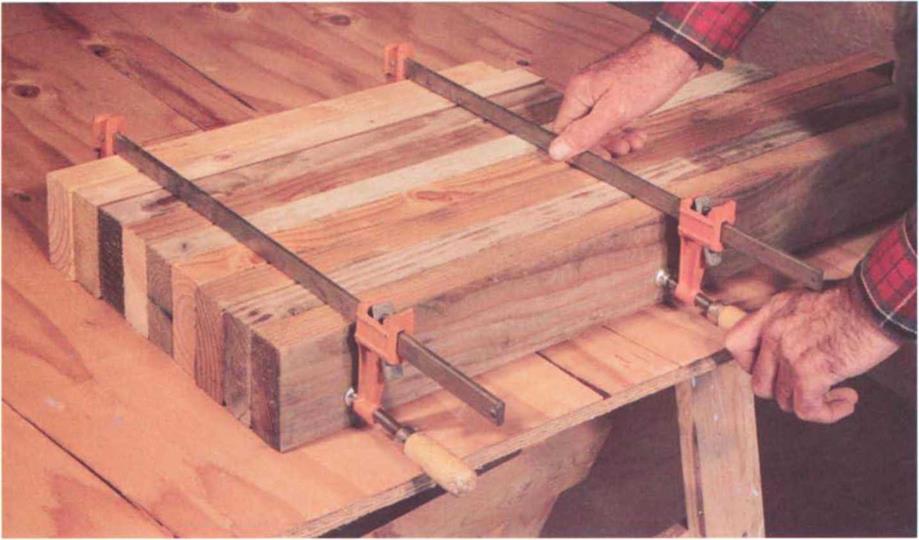
Leave a reply